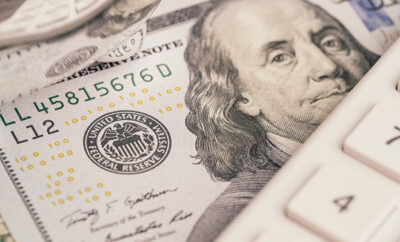
Emotional Spending: Keeping it Under Control
Most of us are familiar with the emotional lift that comes from buying something we really want. In a consumer society where we’re constantly bombarded with advertising, it’s really no surprise
that we feel good while we’re buying things. While there’s nothing wrong with treating yourself to an occasional unnecessary purchase, doing it all the time can become a problem.
Financial experts use the term emotional spending to describe unnecessary purchases that are made while the buyer is sad, stressed, bored or feeling insecure. Shopping is used as a short-term solution for emotional discomfort. It’s a fairly common problem associated with consumer culture in our modern age; credit cards and online retail make it easier than ever to get a mood boost from shopping.
The immediate gratification provided by shopping is a quick way to forget your problems, but it’s more like a Band Aid than a cure. Spending too much money can bring on feelings of guilt or dissatisfaction and lead to more shopping. Underlying issues remain unaddressed and unnecessary shopping can be responsible for a whole new round of problems, including debt, family conflicts, household chaos caused by too many possessions and even hoarding.
Some emotional shoppers avoid financial problems by returning most or all of their impulse buys. This workaround doesn’t come without a price, since it consumes time and energy that could be spent on more positive activities. I used to justify my own frequent emotional shopping by buying only inexpensive items. Still, those small purchases added up and were keeping me from progressing toward my long-term financial goals.
Psychologists use the terms compulsive shopping disorder and oniomania to describe emotional spending at its most extreme. They categorize compulsive shopping with other negative addictive behaviors such as overeating, drug abuse and gambling. According to Psychology Today, these addictions are ways of coping with stress, pain and trauma. Doing something that gives you pleasure activates reward centers in the brain and stimulates the release of dopamine, a brain chemical that influences motivation and mood.
Addictive behavior such as compulsive shopping can lead to a big release of dopamine. The euphoric feeling that comes from the buy often exceeds any pleasure the purchase will bring. Constant repetition of a pleasurable behavior raises the threshold for dopamine release and can contribute to emotional lows when the behavior stops. Over time, more and more shopping is needed to feel the same high.
If you’re a frequent shopper, knowing how to recognize and control emotional spending is an important financial skill. You may not be able to stop this behavior completely, but you’ll have more control over the situation when you understand your underlying emotions. Here are some tips.
Delay immediate gratification.
Putting purchases on hold can help break the cycle of shopping to feel better and ending up with buyer’s remorse. Instead of facing a big credit card bill that makes you regret a session of online shopping, leave items in your shopping cart or add them to your wish list. Wait a few hours or even a day and you may find that you’ve changed your mind about completing your purchase. This is a technique I’ve found to be really helpful when I’m about to hit the buy button for something I don’t really need.
Avoid email promotions.
Email from stores can be a big temptation for emotional and compulsive shoppers. Consider unsubscribing from these communications altogether. To cut down on my impulse shopping, I set up my email app to automatically move communications from stores and online retailers from my inbox to a special folder. I try to open that folder only to check for sales before making a planned purchase.
Find a shopping substitute.
Find an alternative coping behavior that provides positive benefits. Exercise is a good example. An hour of yoga or cardio is a healthy way to lift your spirits and combat anxiety. However, a healthier coping skill does not really address the underlying emotional issues.
Dig deeper into your emotions.
The ultimate solution to emotional shopping, like other negative behaviors, is to gain insight into the underlying cause. Addressing the issues that cause emotional shopping may require you to process some uncomfortable feelings. Therapy may be helpful. The payoff can be big if it means spending less money, getting along better with your spouse or family and successfully saving for long-term goals.
I used these methods to help get my own emotional spending under control and simplify my life. After many hours spent sorting through and donating clothing, craft supplies and household items, some of them barely used, I’m more resolved than ever to replace emotional shopping with healthier activities. ■
Sources: usnews.com, forbes.com, psychologytoday.com and pyramidhealthcarepa.com.







